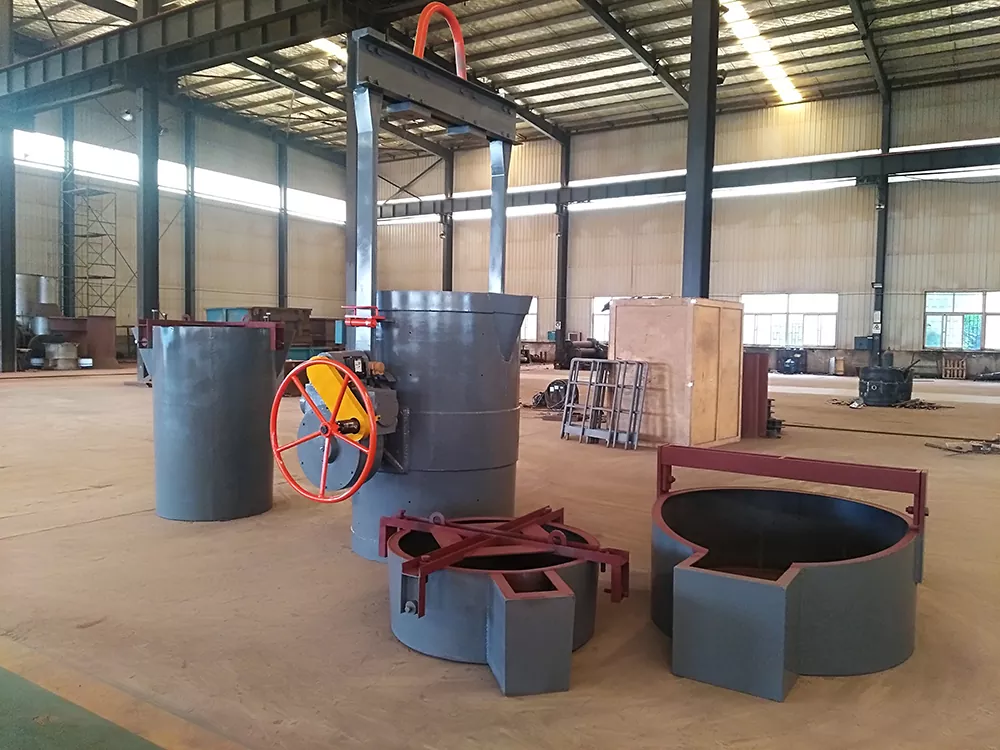Why Is a Treatment Ladle So Important in Modern Foundry Operations?
2025-10-09
In today's metallurgical and foundry industries, the Treatment Ladle plays a crucial role in ensuring molten metal is properly refined, deslagged, and alloyed before casting. As a professional working with Qingdao Kaijie Heavy Industry Machinery Co., Ltd., I've witnessed how the performance of a Treatment Ladle can directly affect the quality, consistency, and cost efficiency of production. It is not merely a container for molten steel—it is a critical component that determines metallurgical purity, chemical uniformity, and casting precision.
What Is a Treatment Ladle?
A Treatment Ladle is a specialized metallurgical vessel designed for holding, refining, and treating molten metal. It's widely used in steel plants, foundries, and alloy production lines. The ladle allows operators to conduct various metallurgical treatments such as desulfurization, deoxidation, or alloy adjustment in a controlled environment.
Key Features of a Standard Treatment Ladle:
| Parameter | Specification Range |
|---|---|
| Capacity | 5–300 tons |
| Material | High-quality refractory lining with carbon steel shell |
| Operating Temperature | Up to 1700°C |
| Lining Life | 50–100 heats (depending on process) |
| Application | Metal refining, inclusion removal, alloy adjustment |
These specifications make it clear that a Treatment Ladle is more than a passive tool—it is engineered to withstand extreme thermal and mechanical stress while maintaining metallurgical accuracy.
How Does a Treatment Ladle Function in the Process?
The Treatment Ladle is used right after the molten metal leaves the furnace. Once the metal is poured into the ladle, operators can inject gases, fluxes, or alloys for further treatment. The design of the ladle, including its refractory lining and bottom purging system, ensures uniform mixing and effective impurity removal.
Typical Functions Include:
-
Desulfurization: Removing sulfur content to improve steel ductility.
-
Deoxidation: Adding deoxidizers like aluminum to eliminate oxygen.
-
Inclusion Removal: Facilitating the flotation of non-metallic inclusions.
-
Alloy Adjustment: Achieving the required chemical composition before casting.
I've seen firsthand how an efficient ladle system from Qingdao Kaijie Heavy Industry Machinery Co., Ltd. significantly enhances production reliability and reduces rework costs.
Why Choose Qingdao Kaijie Heavy Industry Machinery Co., Ltd. for Treatment Ladles?
This company specializes in producing high-performance metallurgical equipment. Their Treatment Ladle is built with advanced welding technology, precision lining installation, and optimized insulation structures to reduce heat loss. Additionally, each ladle undergoes strict testing, including non-destructive examination and refractory inspection, ensuring safety and longevity.
Advantages at a Glance:
-
Customizable capacity and design for different metal types.
-
Optimized thermal efficiency—less heat loss during transport.
-
Enhanced refractory life and reduced maintenance intervals.
-
Automated handling systems for improved safety.
Q1: Why Is the Treatment Ladle a Vital Component in Steel Refining?
A1: Because it ensures the molten steel achieves the right temperature and composition before casting. Without a properly designed Treatment Ladle, impurities remain, resulting in lower-quality products and higher defect rates.
Q2: How Does the Treatment Ladle Improve Production Efficiency?
A2: The Treatment Ladle enables simultaneous refining and alloying, which reduces processing time. By maintaining temperature stability and minimizing metal oxidation, it ensures higher yield and energy savings.
Q3: What Makes Qingdao Kaijie's Treatment Ladle Different from Others?
A3: Qingdao Kaijie's ladles are built using advanced refractory technology and bottom stirring systems, ensuring homogenous treatment. I've personally operated their ladles and can confirm that their durability and thermal control are exceptional, even under demanding production conditions.
The Importance of Treatment Ladles in Modern Foundries
The significance of a Treatment Ladle cannot be overstated. It is essential for maintaining metallurgical integrity, reducing energy costs, and improving casting quality. From small-scale steel producers to large integrated plants, this equipment is indispensable. A well-designed Treatment Ladle ensures process consistency, minimizes contamination, and optimizes metal recovery—factors that directly impact profitability.
Final Thoughts
In conclusion, the Treatment Ladle is the heart of the secondary refining process. It bridges the gap between furnace operations and final casting, ensuring that the molten metal meets strict quality standards. As someone who values reliability and precision, I can say that choosing a high-quality ladle from Qingdao Kaijie Heavy Industry Machinery Co., Ltd. is an investment in efficiency, safety, and long-term performance.
If you're looking for durable, custom-designed ladles built to meet international metallurgical standards, contact us today and discover how our solutions can enhance your foundry operations.
